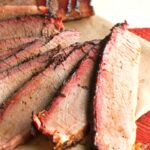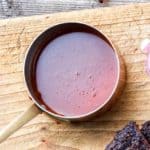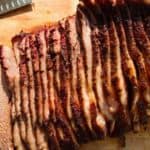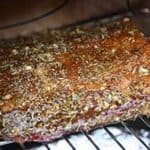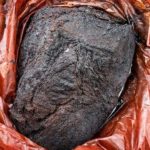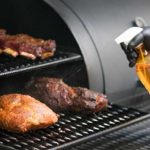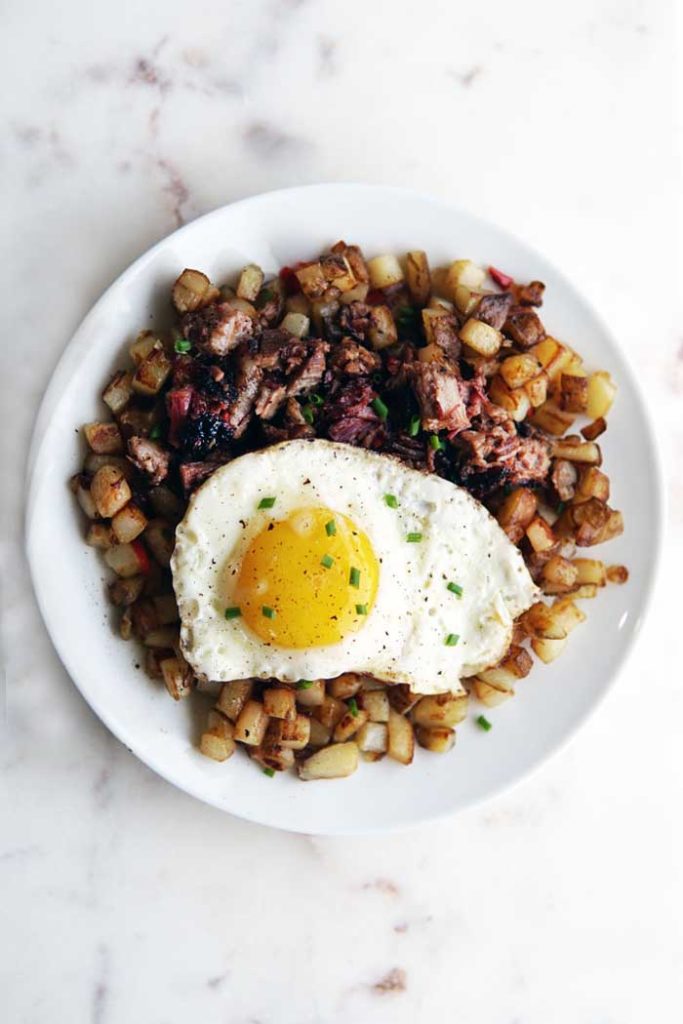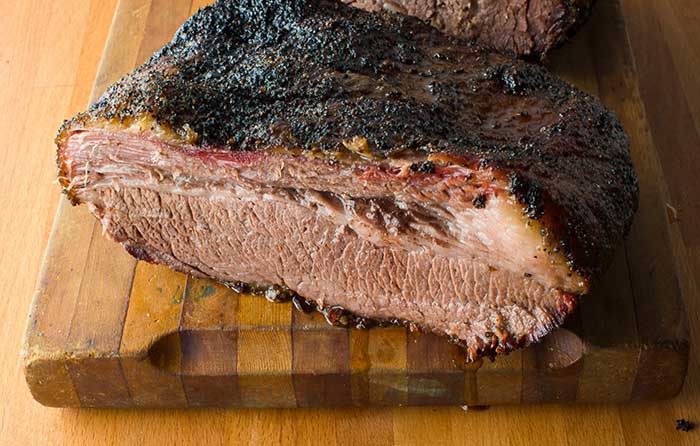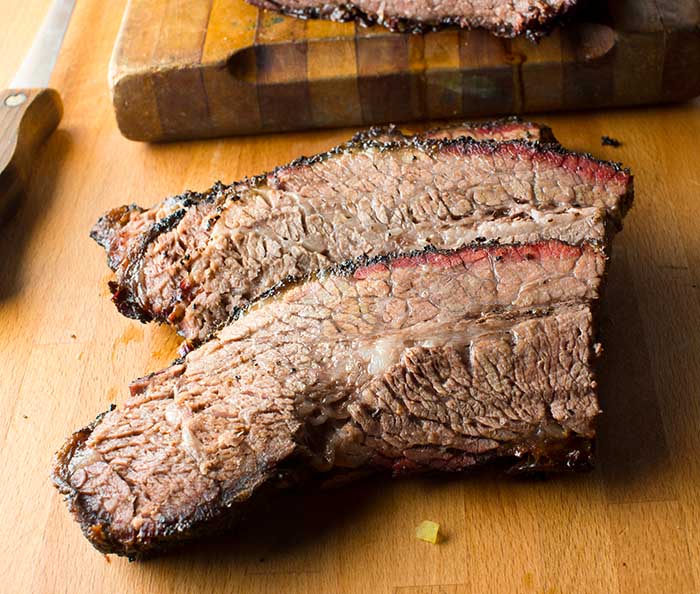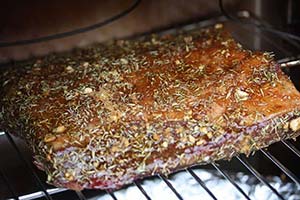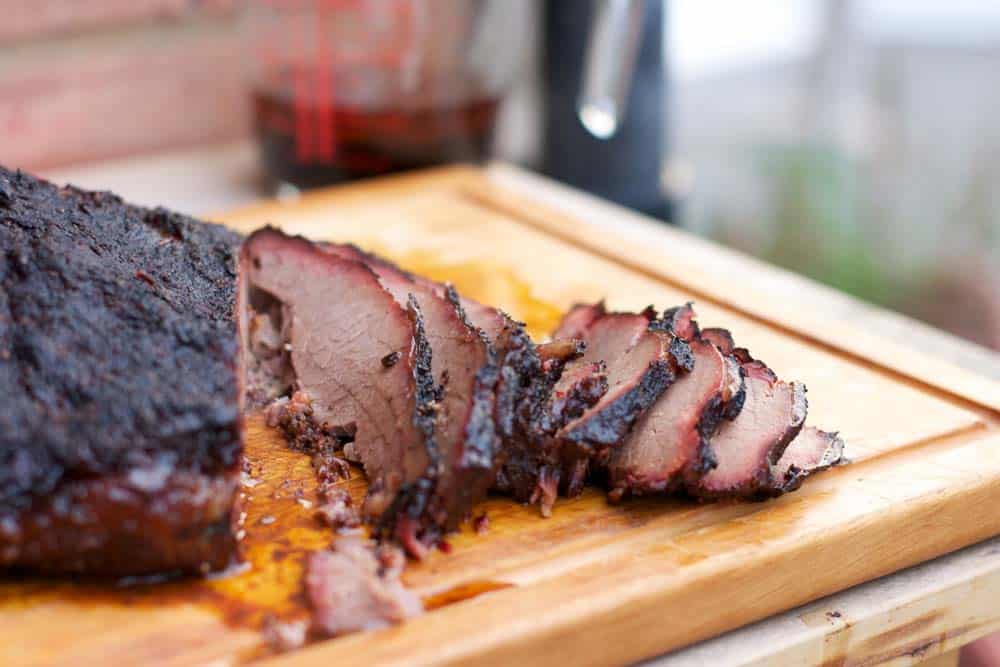Learn how to prevent dry, tough barbecue brisket the right way with our easy cooking guide. From the perfect cooking temperatures to BBQ techniques, here’s how to fix overcooked brisket.
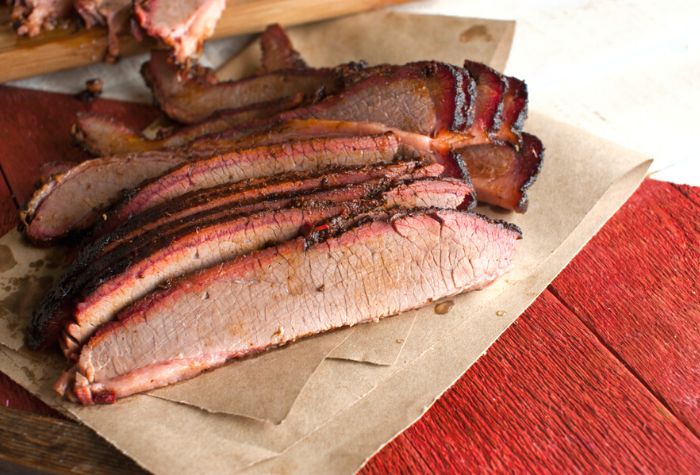
There is nothing better than a perfectly smoked brisket. It’s the highlight of many a barbecue and the perfect way to show off your beef smoking skills.
There is also nothing worse than an overcooked brisket. Spending hours by a hot smoker checking in on the main dish of the barbecue, only for it to come out dry and tough, can be devastating.
Luckily there are a few ways to fix (and also prevent) producing an overcooked brisket.
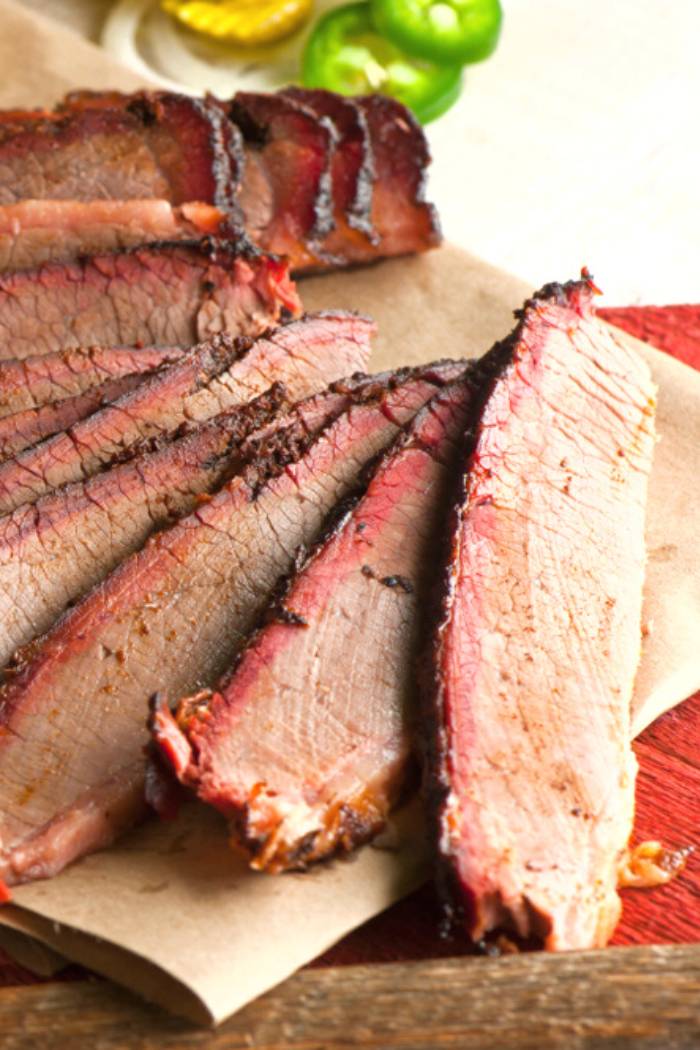
Brisket Explained
Brisket is a large cut of beef taken from the chest area of the cow. Brisket is a very flavourful cut of beef, but it can be tough if not cooked correctly.
The brisket cut can be broken down into two subprimal cuts of the flat and the point.
The flat is a rectangular-shaped cut that has a fat cap running along the edge but is overall a leaner cut of brisket meat.
The point is more triangular in shape, as the name suggests. It is the fattier and more intensely flavored of the two cuts. The brisket point is the cut most commonly used for making brisket burnt ends.
When making a classic smoked brisket, the whole cut (sometimes labeled as a whole packer brisket) is used as one piece.
As brisket has a high percentage of connective tissue and collagen, it must be cooked low and slow. This allows enough time for the tougher tissues to break down and the collagen to render and reinfuse back into the meat. This makes it the perfect cut of beef for barbecue smoking.
How to Tell if Brisket is Overcooked
There are three main telltale signs of overcooked brisket:
- Clear Juices: If you slide a skewer into the middle of a brisket and the juices run clear instead of slightly red or pink, it’s overcooked.
- Too Easy to Slice: If your brisket slices nice and easily it’s a sure sign it’s overcooked. Rigid and dry meat is easy to slice through; moist and tender meat should require some effort and maneuvering from the knife.
- Internal Temperature: If the internal temperature of your brisket is reading 205℉ (96℃) or higher before coming off the smoker, it’s already gone to the point of being overcooked. The internal temperature of the brisket will continue to rise even after it’s removed from the grill and left to rest.
Can You Fix an Overcooked Brisket?
You’ll be pleased to know that, yes, you can fix an overcooked brisket – but you might be surprised to learn that the solution to saving it is by cooking it more!
Brisket that has dried out from overcooking needs to be rehydrated; there are two ways to approach this.
Broth Bath
This is ideal if you want to keep the brisket whole. Here’s how to do it:
- Create a broth and heat it up until it is warm on the stove. Ideally, the broth would be made from juices you’ve collected from the brisket as it’s cooking, but if not, you just want something that is going to complement the taste of the meat and not overpower it.
- As the broth is warming, take your brisket off the grill and wrap it well in two layers of foil. Leave a little opening at the top. If you’re worried about it leaking, you can always place the foil package in a casserole dish to catch any runoff.
- Pour the warmed broth onto the brisket and seal up the top of the foil.
- Check on the brisket periodically to see if it is absorbing the liquid.
- Once the majority of the liquid is gone, it can be returned to the grill to carefully heat back up to the correct serving temperature.
Sliced & Swimming
Ideal if you have been collecting the brisket juices while cooking.
- Slice your overcooked brisket into ¼-inch thick slices and lay them in a tall-sided baking tray or shallow casserole dish.
- Take your collected cooking juices and remove the fat. This can be done by using a fat separator or waiting for them to cool and then removing the fat from the top with a spoon.
- Cover the sliced brisket with the cooking juices. Reheat slowly until the liquid has gone and the meat feels tender again. This step is best done in an oven as it gives you greater control over the temperature, and it’s easier to monitor what’s going on.
These methods might not be a quick way to get your brisket back to its optimal form, but they are the most foolproof.
If this sounds a bit too time-consuming, you can always use your brisket for other dishes.
What to Do With Overcooked Brisket
If you don’t have time to revive your brisket or it seems past the point of no return, there’s no need to panic. There are plenty of other delicious options to make some great dishes out of overcooked brisket:
Brisket Burnt Ends
Traditionally, brisket burnt ends are made from the point end of the brisket as it’s the most tender part of the cut. If the majority of your brisket is overcooked, it’s possible that the point end might still be salvageable. This can be used to make a simple version of brisket burnt ends.
Usually, the point would be separated from the rest of the brisket before cooking and smoked in a dry rub mixture. Since the meat is already cooked, we can just skip ahead to the cubing and coating in BBQ sauce steps.
Granted, it’s not your classic version of burnt ends, but it’s still a good way to use up part of your overcooked brisket.
Smoked Brisket Chilli
Chilli is a quick and simple way to use brisket that is a bit too dry to eat on its own. You can cut the brisket into small cubes or shred it to make more of a pulled beef consistency. Either will work fine and will absorb the liquid from the chili mix well.
Make your preferred chili mix and add your brisket.
Allow it to simmer until all the flavors have been infused and it has reached a good consistency, then serve with your favorite sides.
Beef Brisket Stew
Overcooked beef brisket works great as a beef stew as it has plenty of time to sit and rehydrate in the tasty stew juices.
Saute vegetables (onion, carrot, celery) with butter in a stock pot until softened. Add in some flour to create a roux and thicken the stew mixture. Chop your brisket into bite-sized chunks and add to the pot with broth or beef stock.
Allow this to simmer on low heat until the brisket is tender and the stew is thickened to your liking.
How to Prevent Overcooked Brisket
Get Your Settings and Timings Right
Brisket needs to be cooked low and slow, so an ideal smoker temperature is around 225℉ (107℃). As a general rule at that temperature brisket will need 1-1.5 hours of cooking time per lb pound of meat.
Keep an Eye on Internal Temperature
The ideal internal target temperature for brisket is 205℉ (96℃). That doesn’t mean that that is the temperature we are aiming to reach while it is on the smoker. Meat holds a lot of residual heat, especially large cuts like brisket.
Once it’s removed from the smoker, that residual heat will result in carry-over cooking and the internal temperature will continue to rise. This is why it’s important to remove your brisket from the smoker when the internal temperature reaches 195℉ (90℃) to avoid overcooking.
Brining the Brisket
Brining your brisket with a salt rub before smoking is one way to prevent overcooking. When meat is left to sit in a salt rub for long enough, the salt will work its way into the tissue and draw moisture toward it. The salt then dissolves in that moisture making a brine solution. The brine is reabsorbed into the meat, helping to keep it moist when cooked.
Use the Texas Crutch
The Texas Crutch is a method invented by pro pitmasters on the BBQ competition circuit. It helps with moisture retention in a beef brisket on a low and slow cook.
When cooking brisket, you can sometimes come up against what is known as ‘The Stall’. This is when the internal temperature of the brisket hits between 145-175℉ (62-79℃), and the moisture in the meat starts to evaporate. This evaporation causes the meat to cool down (in the same way as sweating cools down humans). That then slows down the entire cooking process; all the while, the brisket is losing more and more moisture.
The Texas Crutch method is where you monitor the internal temperature of the brisket. As soon as it hits 145℉ (62℃), you wrap the beef in foil or butcher’s paper.
This helps to trap any juices that might be being lost so that they can reabsorb back into the meat. It also helps to keep the internal temperature climbing to where it’s needed.
Tips for Perfect Smoked Brisket
Pick a Good Cut
The very first step in getting a perfectly smoked brisket is choosing a good cut of beef.
If you’re picking a cut of brisket that doesn’t have an adequate amount of fat, you are more likely to have issues when smoking.
Try to buy certified USDA Prime beef if in the supermarket, as that need to have a certain percentage of marbling to carry that label. If buying from a butcher, let them know your plans for the beef, and they can provide you with the best-suited cut.
Know Your Smoker
If this is your first time using your smoker, a brisket might not be the best dish to try for its inaugural run. Brisket needs a set and steady temperature over a long time period in order to cook properly.
If you don’t know the ins and outs of your smoker and how it reacts during long cooks, you could face temperature fluctuations that will ruin the whole process.
Don’t Forget to Rest
The rest process for smoked brisket can be just as important as the cooking. Leave the brisket to rest for an adequate amount of time before cutting so that the juices can thicken back up as they cool. The thicker the juices, the less likely they are to run out when the brisket is being sliced.
